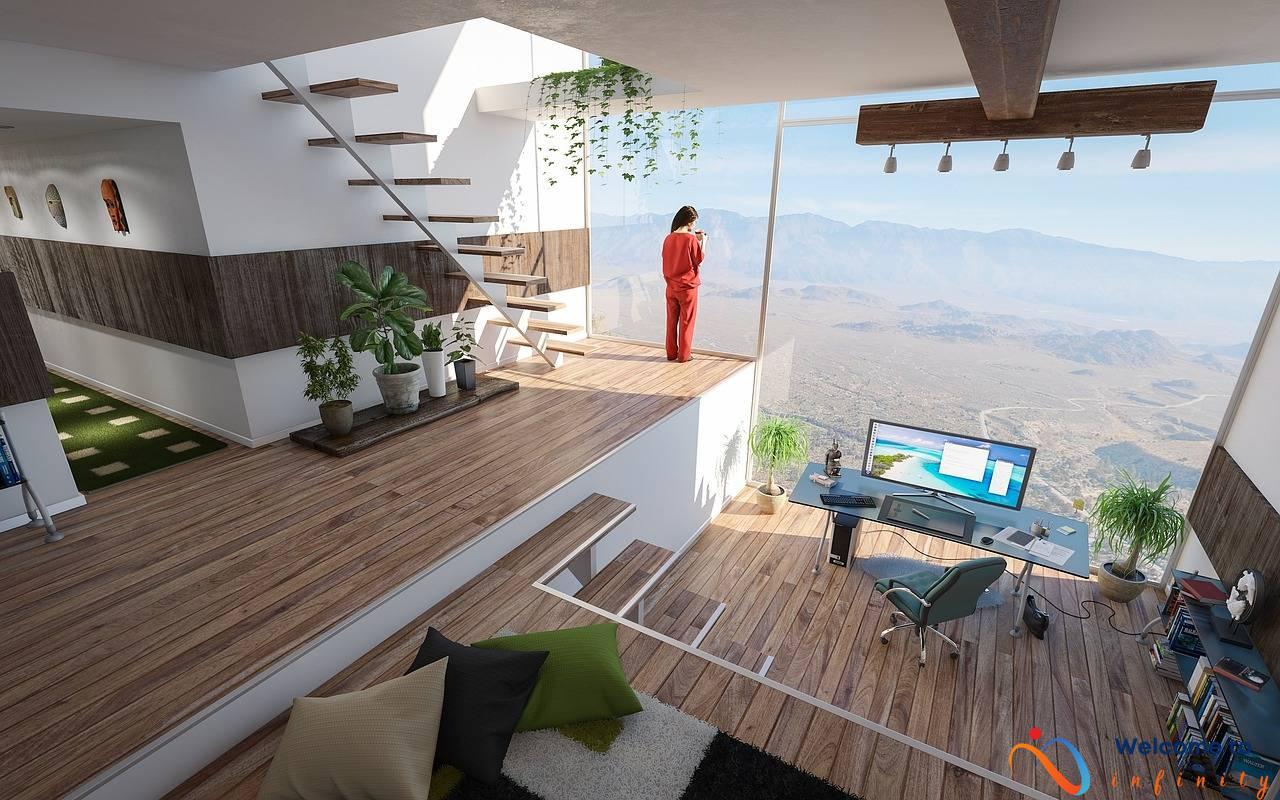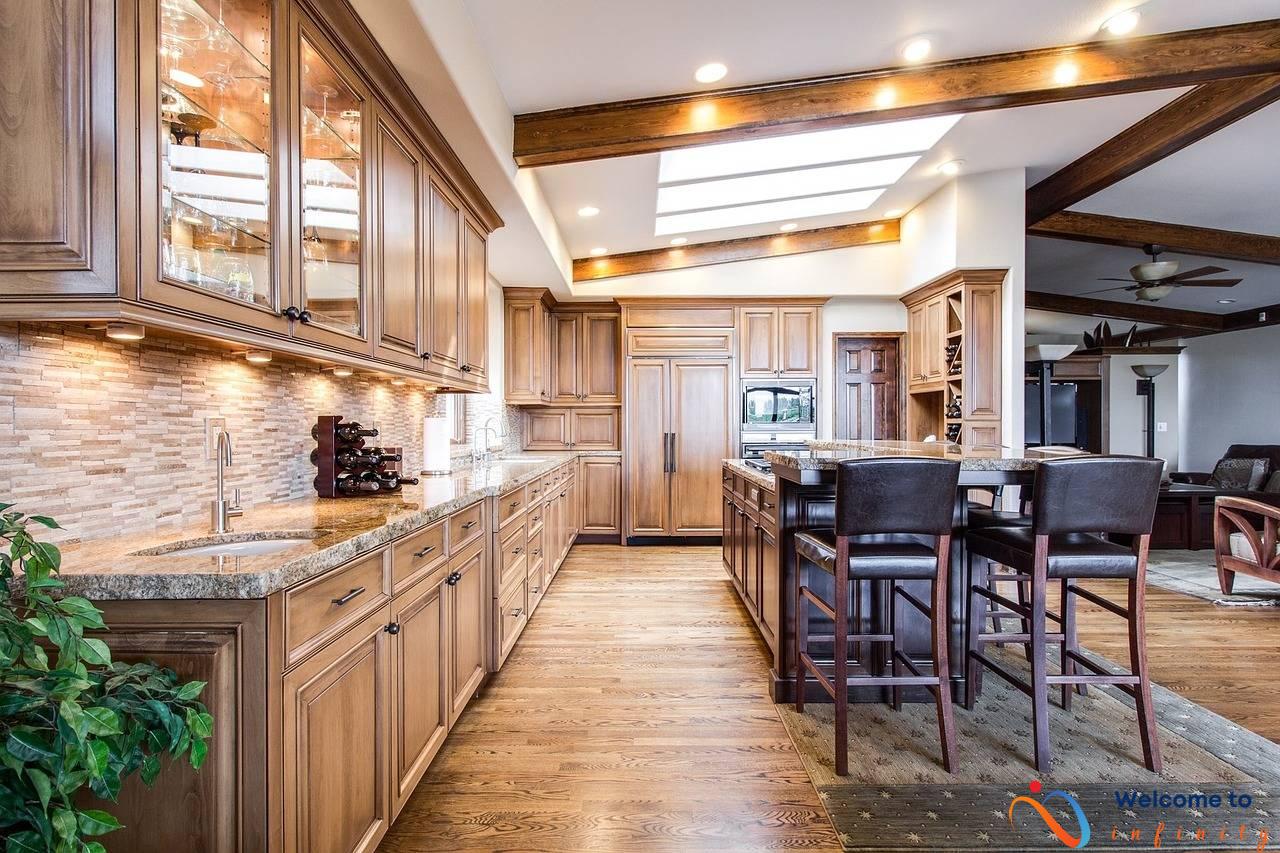When it comes to selling a house, home staging is an essential step in attracting potential buyers. However, making certain mistakes along the way can be costly and time-consuming. To ensure you sell your house faster, it is vital to learn how to avoid these missteps. Here are the top mistakes to avoid when home staging.
Before staging, ensure that your home is cleared of personal items and thoroughly cleaned. Overlooking this step can instantly turn off potential buyers, causing them to lose interest in your property.
While minor repairs may seem insignificant, they can make a lasting negative impression on potential buyers. Things like patching holes in walls or fixing leaking faucets should be taken care of before staging your home.
Showcasing unique features in your home is important, but overdoing it with excessive decor can be a mistake. Avoid decor that may not appeal to a broad range of buyers, and instead stick to simple and tasteful design elements.
It's easy to get caught up staging the interior of your home, but neglecting to stage outdoors can be just as bad. Curb appeal is crucial in making a strong first impression on potential buyers. Be sure to clean up the yard, add some outdoor seating, and maybe even a fresh coat of paint on the front door.
Outdated light fixtures can make the home appear dark and uninviting. Upgrading them can give the home a fresh look and make it appear brighter. Opt for warm, soft lighting to create a cozy and welcoming atmosphere.
By avoiding these common mistakes, you can stage your home to perfection and attract more potential buyers. Taking the time to make these small changes can make a significant difference in selling your home faster and for a better price.
Skipping deep cleaning and decluttering
When preparing your home for sale, one of the most important things to keep in mind is the deep cleaning and decluttering process. Before staging your home, it is crucial to clear the space of all personal items and give it a thorough cleaning. Skipping this step can turn off potential buyers instantly.
Start by decluttering the home of any personal items such as family photos, artwork, or decorative pieces that may distract buyers from envisioning themselves living in the space. Additionally, remove any unnecessary furniture or items that can make the home appear cluttered or cramped.
Next, give the home a thorough cleaning, including deep cleaning carpets and floors, wiping down surfaces, and ensuring that all appliances are in working condition. A clean home not only makes a better first impression but can also add value to the property.
Furthermore, during the cleaning process, it is important to pay attention to details such as visible stains or odors that can be a major turn off for potential buyers. Repairing these issues can make your home much more appealing and increase the chances of a successful sale.
Overall, skipping the deep cleaning and decluttering process can have a significant impact on the sale of your home. Make sure to give it the attention it deserves and create a clean, welcoming environment for potential buyers to envision themselves in.
Ignoring minor repairs
When it comes to home staging, it's important to pay attention to the smallest details, like minor repairs. They may seem insignificant, but even something as small as a hole in the wall or a leaky faucet can be a turn-off for potential buyers. Ignoring these repairs can leave a lasting negative impression and ultimately, affect the sale of your home.
To ensure that your home is in top condition for potential buyers, make a list of all the minor repairs that need to be done. This can include patching holes in walls, fixing leaking faucets, replacing cracked tiles, or fixing squeaky doors. It's always best to hire a professional to ensure that the repairs are done correctly and to avoid any potential safety hazards.
By taking care of minor repairs, you're also showing potential buyers that you've taken care of the home and that it's in good condition. It also gives buyers the impression that they won't have to immediately start fixing things once they move in – which can be a major selling point.
Don't let minor repairs leave a negative impression on potential buyers. By taking care of these small issues, you can increase the perceived value of your home and help it sell faster.
Over-the-top decor
When staging your home, it is important to keep in mind that potential buyers have different tastes and preferences. While you want to showcase your home's unique features, going overboard with decor can turn off potential buyers.
An over-the-top decor can make a home feel cluttered and overwhelming, which can distract buyers from focusing on the home's potential. It is essential to keep decor minimal and well-placed to highlight the home's best features.
Avoid using too many decorative items, such as patterned curtains, bold wall art, or quirky furniture pieces, which might not appeal to a broad range of buyers. Keeping decor neutral and simple can help buyers envision themselves living in the space.
However, don't mistake “minimal” for “bare.” A sparsely decorated home can make the space appear cold and uninviting. It's important to strike a balance between showcasing your unique style and keeping the decor neutral enough to appeal to a broad range of tastes.
Remember that less is always more when it comes to home staging. To ensure that your home appeals to a wide range of buyers, keep the decor simple, tasteful, and well-placed. Doing so will make the home appear more spacious, inviting, and ultimately, increase the likelihood of selling faster.
Using bright and bold color schemes
When it comes to choosing the color scheme for your home staging, it's important to keep in mind that most buyers prefer neutral colors. While bright and bold colors may be trendy and eye-catching, they may not appeal to a broad range of buyers. Using a neutral color scheme can make the home appear more spacious and allow buyers to better envision themselves living in the space.
Neutral colors such as beige, gray or white create a blank canvas that allows buyers to focus on the home's features and imagine their own decorative touches. Additionally, when walls and furniture are painted in the same neutral tones, this creates a cohesive and clean look. This can help buyers to feel more at ease and make it easier for them to mentally decorate the space in their own style.
While you may be tempted to add in pops of color, it's best to stick with a subdued color palette that complements the existing features of your home. You can also add color through smaller decorative pieces such as throw pillows or artwork, which are easy to switch out should a potential buyer prefer a different color scheme.
To summarize, when it comes to home staging, using bright and bold color schemes may not be the best choice. By using a neutral color palette, you can create a spacious and cohesive look that appeals to a wider range of potential buyers. With this approach, you can increase the chances of selling your home faster and at a higher price point.
Over-staging
One common mistake when home staging is over-staging. This occurs when homeowners add too many personal items or furniture, making the home appear cluttered and smaller than it actually is. It is essential to stick to minimal and well-placed items to avoid this mistake.
When it comes to furniture, only keep the essential pieces and avoid going overboard with too much furniture. This can make the living space appear cramped and small. Remember, less is often more when it comes to home staging. It is important to create a spacious and comfortable atmosphere that potential buyers can visualize themselves living in.
Another thing to consider when staging is to declutter and get rid of any unnecessary items. An uncluttered space can create the impression of more space available in the home. By minimizing the number of personal items, you'll also ensure that potential buyers will focus on the home's key features and not get distracted by personal items.
Overall, when it comes to staging, it is crucial to create a balance between an inviting atmosphere and spacious living areas. Avoid over-staging and stick to simple, well-placed pieces. This will help potential buyers envision themselves living in the space and ensure a faster sale.
Mismatched furniture
When staging your home, it is important to choose furniture that complements the style of the house. Mismatched furniture, on the other hand, can make a room appear haphazard and chaotic. It is crucial to have cohesive furniture throughout the home to create a seamless flow and give potential buyers a clear idea of the available space.
If you have multiple pieces of furniture that do not match, consider renting furniture that fits the style of your home. This can create a cohesive look that appeals to potential buyers. You can also consider selling or donating mismatched furniture to ensure that all pieces in the home are consistent and cohesive.
Another way to create a cohesive look is by arranging furniture in a way that maximizes the available space. This can involve creating conversation areas in living spaces or highlighting the focal points of each room. By doing so, potential buyers can have a clearer idea of how they can use the space and where their own furniture could be placed.
Finally, make sure to choose furniture that appropriately fits the scale of each room. Oversized furniture can make a room appear smaller, while small pieces can make a room appear empty. By choosing furniture that is proportionate to the space, you can create a harmonious balance that appeals to potential buyers.
Forgetting to stage outdoors
When it comes to home staging, many people focus so much on the interior of their home that they forget about the importance of the exterior. Curb appeal is crucial for making a strong first impression on potential buyers and can be the deciding factor in whether or not they want to see more.
One of the simplest and most effective ways to improve curb appeal is by cleaning up the yard. This means mowing the lawn, trimming hedges, and removing any dead plants or debris. A well-maintained yard can make your home appear more inviting and well-cared for.
Adding outdoor seating is also a great way to showcase your home's potential for entertaining or relaxation. A cozy patio set or a small bistro table can give the impression that your home is the perfect place for outdoor gatherings or enjoying a cup of coffee in the morning.
Another important aspect of outdoor staging is the front door. A fresh coat of paint in a neutral, inviting color can do wonders for the appearance of your home. Make sure the door handle, locks, and hinges are all in good condition and clean.
- Make sure the yard is clean and well-maintained
- Add outdoor seating to showcase your home's potential for entertainment or relaxation
- Consider painting your front door in a neutral, inviting color
By staging the exterior of your home, you can create a positive first impression and increase the likelihood of potential buyers wanting to see more.
Neglecting landscaping
Neglecting your landscaping is one of the biggest mistakes you can make when staging your home. A well-maintained yard not only adds to the overall appearance of the property, but it also adds significant value to your home. Neglecting your yard, on the other hand, can make the buyer see your home as a fixer-upper rather than a move-in ready property.
To prevent this, be sure to keep your lawn mowed and your shrubs and trees trimmed. Remove any dead plants or weeds and add some fresh mulch to the garden beds. Consider adding some colorful flowers or plants to liven up the space.
If you have a larger yard or need to cover up unsightly areas, consider adding some landscaping features such as a water feature or a small retaining wall. However, be careful not to overdo it as too many features can also be overwhelming and detract from the overall appeal of the property.
Additionally, if you're located in an area with a harsh climate, consider adding some low-maintenance landscaping solutions such as synthetic turf or xeriscaping. This will not only save you time and money in the long run but also attract buyers who are looking for an easy-to-maintain yard.
Remember, a first impression is everything, and the exterior of your property is the first thing potential buyers will see. Neglecting your landscaping can be a major turn off and cost you the sale. By making a few simple improvements, you can significantly increase the appeal and value of your home.
Not depersonalizing the space
One of the most common mistakes people make when home staging is not depersonalizing the space. When potential buyers walk into the home, they want to envision themselves living there and not feel like they are in someone else's space. This means removing personal items such as family photos, personal mementos, and religious decor.
While these items may hold sentimental value to you, they can be distracting to potential buyers. By removing them, you allow buyers to focus on the home's features and envision themselves living in the space. Additionally, by depersonalizing the space, you create a more neutral environment, which can appeal to a broader range of buyers.
If you are unsure of what items should be removed from the home, consider hiring a professional home stager. They can walk through the space with you and provide guidance on what elements to keep and what to remove.
It is also important not to leave the space completely empty. While it is necessary to remove personal items, you should still aim to create a warm and inviting atmosphere. Consider adding neutral decor and furniture to showcase the home's features without being too overpowering.
Overall, depersonalizing the space is a crucial step when home staging. It allows potential buyers to envision themselves living in the space and can help your home sell faster. By removing personal items and creating a neutral environment, you can create a welcoming atmosphere that appeals to a broad range of buyers.
Forgetting to update light fixtures
Light fixtures may seem like a minor detail, but they can have a big impact on the overall appeal of your home. Outdated fixtures can make your home appear dark and dreary, which can be a major turn off for potential buyers.
By upgrading your light fixtures, you can give your home a fresh and modern look. Consider swapping out old fixtures for new, energy-efficient options that provide more light while using less energy.
Additionally, updating your light fixtures can make your home appear brighter. This is an important factor to consider, as bright homes generally appear more inviting and spacious. Soft, warm lighting can create a cozy atmosphere, while bright lighting can make your home feel more open and airy.
If you're unsure about which light fixtures to choose, consult with a professional. They can help guide you in selecting fixtures that not only look great but also fit within your budget.
- Upgrade outdated fixtures for a modern look
- Consider energy-efficient options
- Create a bright and inviting atmosphere
- Consult with a professional on fixture selection
By updating your light fixtures, you can create a warm and welcoming atmosphere that will make potential buyers excited about your home. Don't let outdated fixtures darken your chances of selling your home, take the time to upgrade and reap the rewards.
Using harsh lighting
Using Harsh Lighting: Why You Should Avoid It When Home Staging
When staging a home, many sellers tend to focus on the aesthetic features such as furniture and decor and forget the importance of lighting. Lighting plays a crucial role in creating a welcoming and inviting atmosphere that can leave a lasting impression on potential buyers. One of the biggest mistakes sellers make is using harsh lighting that makes the home appear uninviting and sterile. Here's why opting for warm, soft lighting is the way to go.
Harsh Lighting Makes the Home Uninviting and Sterile
Using harsh lighting can make your home appear uninviting and sterile, which can turn off potential buyers. Cold, fluorescent lighting can create a hospital-like feel that can leave buyers feeling uncomfortable. Additionally, bright lighting can cast harsh shadows and glares, making the home feel unwelcoming. Avoid using harsh lighting when staging your home.
Opt for Warm, Soft Lighting Instead
Instead of using harsh lighting, opt for warm, soft lighting that creates a cozy and welcoming atmosphere. Soft lighting can create a sense of comfort and relaxation, making the buyers feel at ease. Additionally, by adding lamps and dimmer switches, you can create a variety of moods that can help to highlight your home's features and create a welcoming ambiance. Remember, the right lighting can make or break the sale of your home.
Conclusion
The importance of lighting cannot be overstated when it comes to home staging. Using harsh lighting can make the home appear uninviting and sterile, while warm, soft lighting can create a welcoming and cozy atmosphere that can leave a lasting impression. By opting for warm, soft lighting and adding lamps and dimmer switches, you can create the perfect ambiance that highlights your home's unique features and attracts potential buyers.











